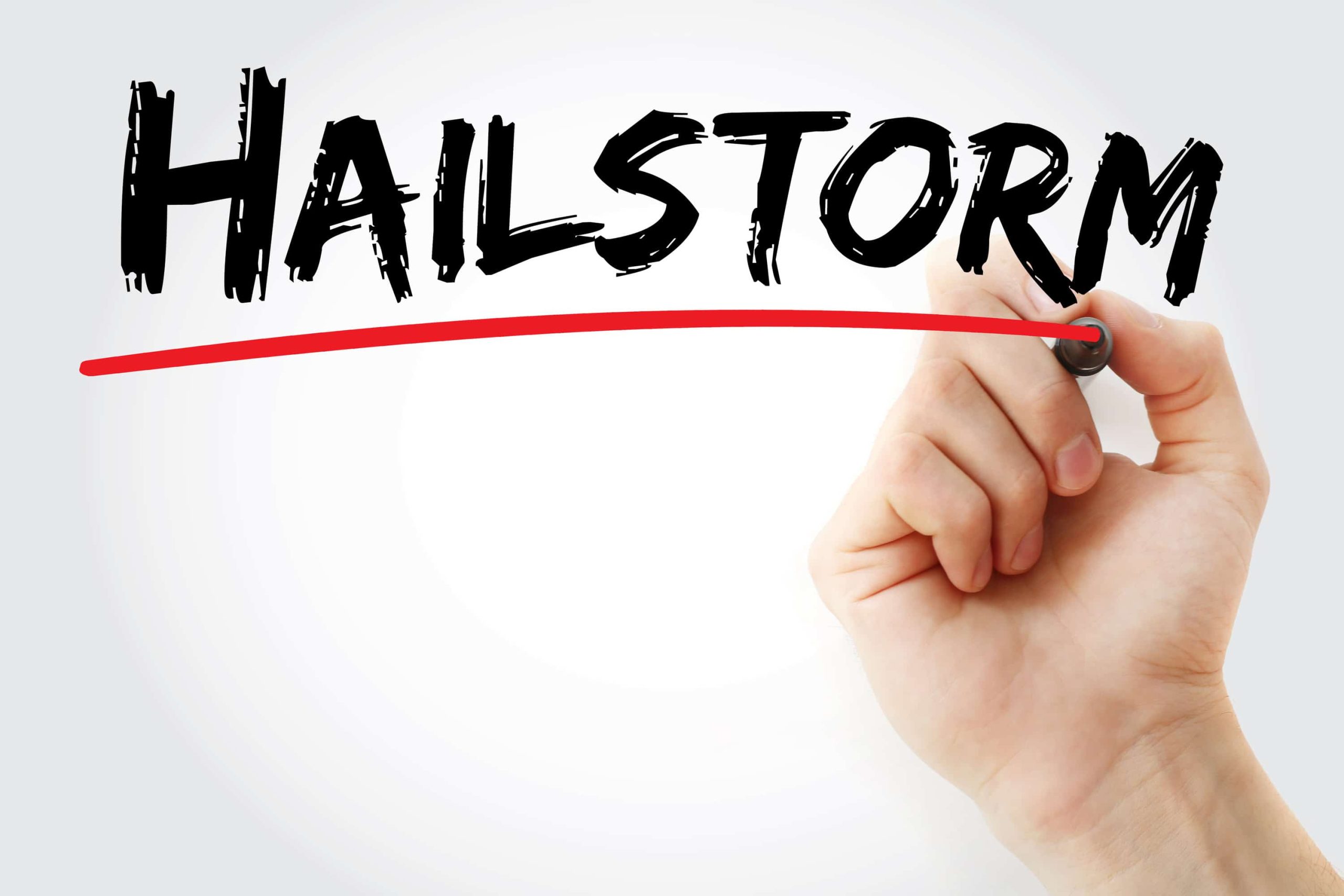
When Hail Hits an HVAC System: What to do When Nature Strikes
What happens when hail hits an HVAC system? Hail is a weather phenomenon that is both admired and feared. Neither snow nor rain, hail starts as tiny ice crystals in the atmosphere. These crystals are tossed back and forth until more and more ice freezes around them, eventually falling to earth. Hail ranges in size from small pellets that pitter-patter across a roof to golf ball (or even softball!) sized projectiles that cause major property damage.
Take Care During a Hail Storm
Much of the United States is susceptible to hailstorms, and the risk increases during Spring weather when tumultuous air conditions can be just right to create hail. Hail can dent cars, break windows, damage roofs, and shred through freshly planted landscaping. It can cause severe physical harm to any animals or people caught in a hailstorm, so bring your pets inside and resist the temptation to stand in the driveway and watch the hail fall. The larger hail is, the faster it falls to earth. The National Severe Storms Laboratory states that small hail can fall at speeds around 9 miles per hour while extremely large hail can reach speeds of over 100 miles per hour!
Heating, Ventilation, and Air Conditioning (HVAC) systems are especially vulnerable to hail damage. By necessity, air conditioning units are placed outside, leaving them exposed to weather events. Commercial HVAC systems are usually installed on roofs, giving them little to no protection from hail or other debris. So what happens when hail hits an HVAC system?
SEE ALSO: Maintenance Contracts for HVAC: Are They a Good Investment?
Bring the Hammer
Studies on the effects of hail on property provides the data needed to advance building techniques to prevent damage. However, creating a hailstorm is not easy! There is no flip to switch to create the conditions where hail can form. Not to mention, it would be difficult to set units out in a field and hope for a hail strike. So how do you take matters into your own hands? One study, “Hail-Effects on Air Conditioner Performance” by Matthew J. Sitzmann, Frank K. Lu, and Steve R. Smith did just that by creating a hail damage simulation. For the study, they used a “wooden dowel with a hemispherical head,” to repeatedly strike an air conditioning unit to simulate hail damage.
In this study, they gridded out the entire surface of the air conditioning unit, using a random number generator to determine where to strike. This best simulated the unpredictable nature of hail. Using several different assessments, Sitzmann, Lu, and Smith tested the air conditioners before and after damage to determine how much the performance suffered at varying levels of hail damage. They also set up two residential air conditioner units in their lab to simulate normal usage conditions.
Stronger than you Think
They discovered that the main point where hail would damage an air conditioning unit is on the condenser coil fins, which cover the exterior of the unit. When the hail-simulation dowel struck, the fins flattened against the machine. As damage increased, the flattened condenser coil fins could no longer allow air to pass into the unit, and as a result the unit’s performance began to suffer. The results showed the air conditioning unit’s resilience: when the fins were flattened in patterns similar to a hail strike, the unit still operated well. Also, the Seasonal Energy Efficiency Ration (SEER), or how well the unit works during a cooling season, only dropped by about 5%. An extreme measure of hand-flattening all of the fins was needed to make the unit struggle, showing a drop in SEER of around 23%-27%. Air conditioning units are built to take some damage and keep on functioning!
When it came to repairing the air conditioning units, the study used a fin comb to straighten the flattened and damaged condenser coil fins. This restored the function of the units to within 1%-4% of their original, undamaged condition. When dealing with a hail damaged air conditioning unit, schedule an appointment with your local, licensed HVAC service provider. They will provide you with available options to get your HVAC system back on-line.
Protection from Harm
When air conditioning units are installed in areas that deal with a lot of hail, it may be best to invest in some protection. There are different types of hail guards available that can be pre-installed or added on after the installation of the air conditioning unit. There are a few different options for shields, such as metal frames with a lattice-like grid that offers both protection and air flow, and filter screens which can be reinforced to be very strong and resist damage from hail and debris. If you are considering hail shields for any HVAC units or air conditioners, it is important to ensure that the shield does not inhibit the unit from properly functioning.
Ice to Meet You
Hail is not a problem at the forefront of most people’s minds, but when hail hits an HVAC system it can cause a lot of damage. HVAC systems are susceptible to hail damage because air conditioning units and heat exchanges must be placed outdoors and are typically open to the elements. Although these units can take some damage and continue to function, it is best to have them repaired as soon as damage is noticed. This ensures proper function, taking care to make sure no further issues arise from the initial hail damage. A fin comb can be used to restore the functionality of the compressor fin combs on the exterior of an air conditioning unit. If hail is a common seasonal weather issue, it is best to install hail guards to offer extra protection. Call your local, licensed HVAC provider for assistance!


